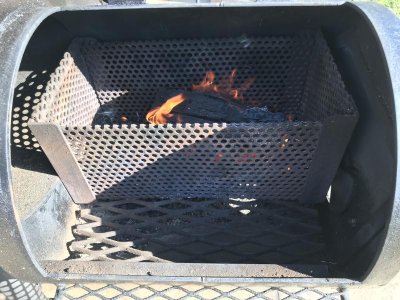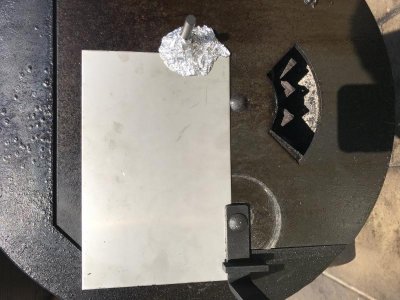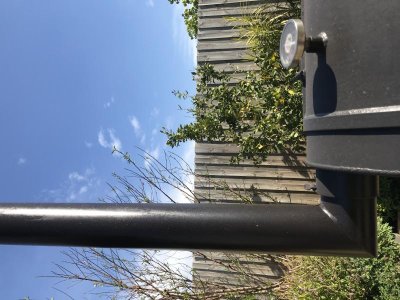I am a Yoder Wichita customer, and have regularly experienced a range of issues related to how the pit drafts with symptoms including:
1. Smoke flowing backwards out of firebox intake damper instead of out of the stack
2. Inability to close the firebox door and maintain thin blue smoke out of the stack - within seconds of closing the door I typically get thick white smoke
3. Excessive fuel usage - The only option to achieve reasonable combustion and smoke quality has been to leave the firebox door open, and this approach wastes a lot of fuel via heat loss through the open firebox door.
4. The pit is in no way relaxing to use. Because of the insufficient draft the fire will regularly smoulder and even go out, which leaves soot on the food. I had regularly needed to come back every 15 mins or so to shift logs around to get them to burn, and occasionally even re-light a fire with kindling when the fire went out.
5. At times when the firebox door was left open to achieve combustion and the fire burned the logs down to coals, the large gaps in the expanded steel grate allows the coals to fall through the grate to the bottom of the firebox, and more than once I came back to a pit that was still reading a temp of 250F and upon opening the firebox found an empty charcoal grate with all the coals fallen through and then needed to build the fire again mid cook.
Similar to a few other forum members I decided to take on the challenge of trying to get the pit working the way I wanted it to, and am sharing my solution in the hope that it helps other Wichita customers be happier with their pit. Credit goes to the significant research done by Slamkeys - this research helped shape my thinking and approach here.
My goals/constraints for the modifications were:
1. The modifications need to be easily reversible in case I decide to sell the pit
2. No interest in cutting into the pit based on goal 1, but also in case the modification didn't work and I didn't want to be left in a worse position than I am now with an expensive pit.
3. I initially started off trying to get the pit working with the heat management plate installed but gave up. I found it limited the airflow too much, and to get the pit drafting to my liking would probably require cutting a new firebox air intake per Slamkeys approach previously posted here.
4. Conscious that one valid outcome is selling this pit and buying a different brand, so any solution needed to be cheap in terms of $ and also my time.
5. Didn't want to have to arrange for the pit to leave my house.
Modifications:
1. Completely block the upper firebox damper with a small flat piece of stainless steel sheet balanced between the door latch and the damper adjustment handle. This upper damper hole is far too high, and significantly contributes to the drafting issues.
2. Use the existing charcoal grate as a platform, for an additional surface to prevent coal prematurely falling through to the firebox floor. I initially used a sheet of perforated (not expanded) steel with something like quarter inch round holes evenly spaced throughout it, and after seeing how much of a positive difference it made I ended up having a charcoal basket fabricated that had a similar base to it. I use the basket for all fuels including log splits as well as charcoal. As well as the smaller holes on the base of the basket stopping coal falling through to prematurely lose the coal bed, the basket runs only half the width of the firebox so it helps me with the goal of running a small hot fire, as well as leaving room next to the basket to pre-heat splits (I have tried running cold splits as well and worked fine).
3. Replaced the chimney stack - A great feature of the Wichita is that the chimney stack is removable without any tools - it literally slides out. I did a bunch of research on drafting in smoker pits as well as wood burning stoves, and the thing that I saw again and again was people referring to the stack as the piece of the puzzle that generates the draft. Can't recall where but someone referred to the stack as the engine that pulls the air through the pit. I measured the stack as being approx 4" diameter, and 20" long, so had a replacement stack fabricated at 4" diameter and 40" long to 'increase the engine horsepower'.
The modifications listed above have left me significantly happier with the pit. I have used it in high wind blowing in various directions, and the smoke flows out the stack and doesn't reverse direction. The fuel burns steadily and at a slower rate. I easily achieve thin blue smoke and even shimmering vapor with the firebox door shut (and even remembering that the top intake damper is blocked), and can leave the pit for far longer without babysitting.
I previously had to start the pit with 2 charcoal baskets to achieve reasonable performance, and now I can start the pit without any charcoal at all.
My most recent fire lighting workflow in a car analogy was a standing start quarter mile sprint to see how hot I could quickly get it and maintain thin blue smoke:
No charcoal. Stacked a few small pieces of kindling with about 5 coke can width splits in the shape of a # above the kindling. Firebox door shut with top damper hole blocked. Lit the kindling and shut the top lid to the firebox. Within 25 minutes the pit went from ambient temperature to 350f on the temp gauge on the left of the firebox with a roaring fire and thin blue smoke out the stack.





